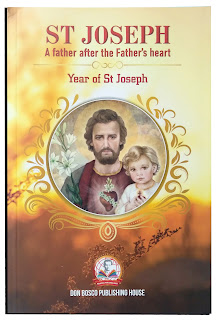The Creative Teacher’s Handbook (Book Review)
Neil Azavedo, The
Creative Teacher’s Handbook, Mumbai: Insight Books, 2010, ISBN
81-7176-581-5, Rs. 70, Pp. 136.
 This is a fantastic book that I came across and was happy I
did after I read through it. It is a valuable handbook for teachers and
contains useful and tested material. For an amateur teacher like myself, it was
a treasure chest but I am sure that even experienced teachers will find in it
valuable resources for spicing up their classes. The best part of the book is
that the author shares his personal experiences and methods which add weight to
what he has written. This is not a book of mere ideas but of creative ideas
that have been tested and found successful.
This is a fantastic book that I came across and was happy I
did after I read through it. It is a valuable handbook for teachers and
contains useful and tested material. For an amateur teacher like myself, it was
a treasure chest but I am sure that even experienced teachers will find in it
valuable resources for spicing up their classes. The best part of the book is
that the author shares his personal experiences and methods which add weight to
what he has written. This is not a book of mere ideas but of creative ideas
that have been tested and found successful.
The book is written in a simple, lucid and encouraging
style. It is not preachy and uses suggestion rather appealingly. The author
constantly reaffirms the reader that what the book is talking about is not
something distant and difficult but something that is within reach and doable. Each
chapter begins with the question regarding the significance of the chapter
which helps put things in perspective and enables the reader understand the
mind of the author. He gives a plethora of ideas focused on helping students
develop their speaking, dramatic and language skills. These constitute the first
part of the book, dealing directly with methods and skills for effective
teaching. The second part of the book concentrates on building up the teacher
and focuses on skills the teacher will need to develop in order to be creative.
Accordingly, we find chapters dedicated to designing creative lesson plans,
organizing fun field trips, understanding the ‘what’, ‘why’ and ‘how’ of
homework, inculcating values, writing creative report cards, learning to use
computers in teaching and effectively handling parent-teacher meetings. The insights
shared in these chapters are penetrating and expressed in a matter-of-fact way.
The book is excellent and highly recommended to all
teachers. I do have some reservations with regard to some of the ideas
expressed in the book. The style of the author seems to be education through
expression and I am not quite sure that it will work out in most schools. Class
control is of grave importance considering the fact that classes are adjacent
to one another and some of the activities and methods given in the book require
a certain amount of noise and confusion which is difficult to permit in
ordinary settings. Nevertheless, this handbook provides wonderful and useful
resource for educating. One must not miss the chapter on computers and the
availability of so many websites offering creative ideas for teaching. The book
concludes with two appendices, one is a teacher’s self evaluation sheet and the
other is a list of themes for projects.



Comments
Post a Comment